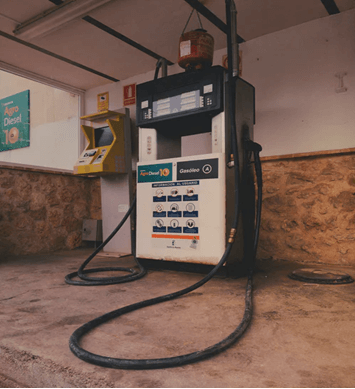Gas Chromatography or Gas-Liquid Chromatography (GC)It is a common type of chromatography used as a piece of analytical science for segregating and investigating exacerbates that can be vaporized without disintegrating.
It is a technique used for the separation, identification, and quantification of components of a mixture of organic compounds by selective partitioning between the stationary phase and the mobile phase inside a column followed by a sequential elution of separated components.
To work, the components to be analyzed must be volatile, thermally stable, and have a molecular weight of less than 1250 Da. The development of analytical methods for the identification, purity assessment, and quantification of drugs and food has received a great deal of attention in the field of separation science.
Since its discovery at the turn of the previous century, gas chromatography has been embraced by a wide variety of industries and is now used for a growing list of applications. Below, we address the most common uses of gas chromatography.
Popular Industrial Uses of Gas Chromatography

Food analysis
The food industry relies on the gas chromatography technique for a variety of applications, including quantitative and qualitative food analysis, food additives analysis, flavoring and fragrance ingredients, and the identification and analysis of contaminants such as environmental pollutants, pesticides, fumigants, and naturally occurring toxins.
Gas chromatography is vital for the food industry to ensure the protection of food products, preventing tainted products from being eligible for consumption.
The technique is also important to ensure the consistency of food products, ensuring that flavor and taste, texture, and smell remain consistent. Although other techniques are implemented by the food industry, gas chromatography remains a highly preferred process due to its ease of use and cost-effectiveness.
Quality control
Manufacturing depends on gas chromatography for quality control, and companies manufacturing vehicles, chemicals, and pharmaceuticals, in particular, are major technology developers.
The pharmaceutical industry uses gas chromatography to help manufacture vast amounts of pure products. The method is used to ensure the purity of the substance produced, the elimination of inconsistencies in pharmaceutical products.
Gas chromatography is also used by the industry to test compounds to screen for trace pollutants. It is also used in the pharmaceutical industry as a method for the separation of chiral compounds.
Studies have shown that the interiors of new cars emit a large amount of volatile organic compounds (VOCs).
For this purpose, gas chromatography has been introduced by the automotive industry to classify and quantify the chemicals that are emitted into the air inside the vehicle from its carpets, door liners, pedals, seat covers, and other interior materials.
Scientists seek to reduce the number of harmful toxins emitted into the interiors of new vehicles.
Chemical producers also rely heavily on gas chromatography, especially in the manufacture of emulsifiers, solvents, and co-solvents, to ensure that they retain the same quality when production is scaled up.
Research
Gas chromatography is important for many areas of study, in particular for the analysis of meteorites and natural products. Scientists use gas chromatography to study the composition of meteorites falling to Earth.
This offers vitally relevant knowledge about the existence of life outside the world, as well as descriptions of primitive life on earth. Specifically, a variety of gas chromatography experiments have been performed to assess the occurrence of ribose in meteorites, the building block of the RNA.
Forensic
Gas chromatography has been used in forensic science for many years. Mostly, it is used to assess the circumstances of a person’s death, such as whether or not they had ingested poison or consumed narcotics or alcohol in the intervening hours.
Scientists take blood and fiber samples from the crime scene and test them using gas chromatography to help the investigators unite the evidence.
Measurement of air pollution
Air pollution has become a growing concern in recent decades. Rapid urbanization has led to more people living in cities where they are exposed to toxins expelled by cars and industry.
There is also a growing body of evidence that has involved air pollution as a risk factor in the development of many diseases, such as cancer.
Gas chromatography is used to tackle the issue by measuring the levels of toxic contaminants in the environment so that scientists can see where air pollution is more intense and how it varies over the day and year to establish effective preventive measures.
Analysis of blood alcohol
Since the 1950s, gas chromatography had been used to detect blood alcohol levels. Since then, it has continued to be used to detect how much alcohol a person has used to help assess how damaged their normal functioning might be.
Also, forensic science was introduced to assess blood alcohol levels at the time of death. There are a large number of applications for gas chromatography to date.
Its advantages, such as its high sensitivity and relatively low operating costs, have made it attractive to many industries required to detect and quantify compounds and molecules within a sample. The approach is likely to continue to be a key technique used across industries.
Tags Gas Chromatography industries
Check Also
Why a Benefits Administrative System is Essential
For any firm, navigating the complexities of employee benefits management may be quite difficult. But …
 Infographic Portal New Infographics Resource Portal
Infographic Portal New Infographics Resource Portal
